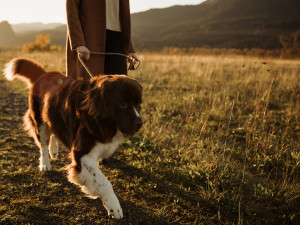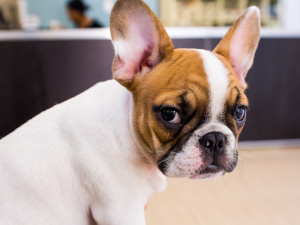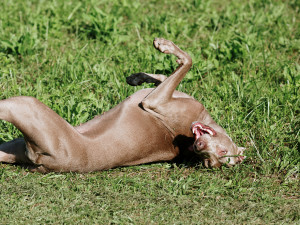Reverse Sneezing in Dogs: Causes and Treatment
Don’t panic: It’s called reverse sneezing, and in most cases, it’s nothing to worry about.
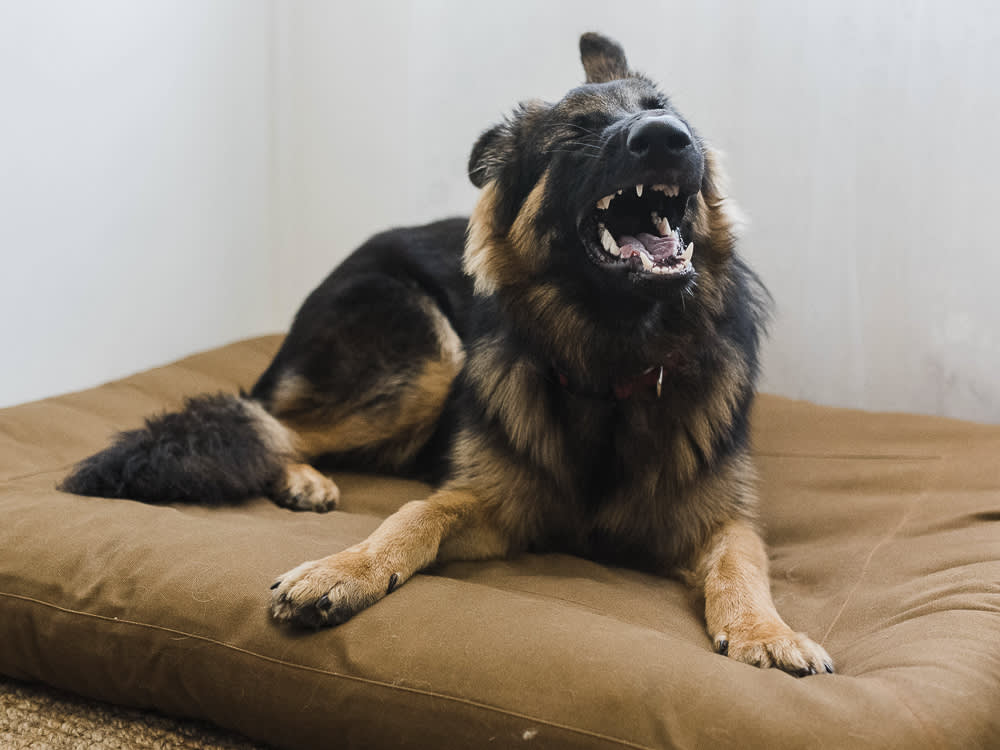
share article

Your pet wants you to read our newsletter. (Then give them a treat.)
You’re hanging out with your dog when they suddenly start making a weird honking sound as though they’re trying to hack something up. This odd noise understandably may lead you to think that your dog is having trouble breathing, or they’re choking and in big trouble. These episodes are often followed by a warp-speed drive to the ER where we (veterinarians) generally assess a happy dog wagging their tail, giving us a look like, “Not sure what all the fuss is about, but that sure was a fun car ride!”
That strange honking noise is called reverse sneezing, and it’s usually harmless. It happens to many dogs and rarely requires medical treatment. Still nervous? Keep reading to learn everything you need to know.
What is reverse sneezing?
Reverse sneezing in dogs is a common condition where your pup rapidly inhales through their nose, making a loud snorting sound. It’s typically harmless, but if it becomes frequent or severe, or it’s accompanied by other symptoms, you should call your veterinarian.
Also known as inspiratory paroxysmal respiration, reverse sneezing in dogs is caused by a muscle spasm at the back of a dog’s mouth where it meets the throat. This spasm, which lasts around 30 seconds, causes a temporary narrowing of the opening of the trachea, making it difficult for the dog to inhale.
Dr. Lori Teller, an associate professor in the Texas A&M University College of Veterinary Medicine & Biomedical Sciences (CVM) says: “The dog may stand very still with their front legs and neck extended. You will notice their chest and abdomen rapidly moving in and out.” Reverse sneezing in dogs is a condition that usually does not need any treatment.
What causes reverse sneezing?
The most common cause of reverse sneezing is an irritation of the soft palate and throat that results in a spasm. The dog’s neck will stretch outward and the chest will expand during the spasm as it tries harder to inhale. The trachea narrows during this time, and it’s hard to get the normal amount of air into the lungs. All of these actions together result in the disturbing display of a reverse sneeze.
What are some other causes of reverse sneezing in dogs? Anything that irritates the throat and leads to a spasm, including:
excitement
eating or drinking
exercise intolerance
mites
foreign bodies caught in the throat
perfumes and environmental irritants such as household chemicals
viruses
pollen, allergiesopens in a new tab, and post-nasal drip
Further evaluation by a veterinarian should be pursued if reverse sneezing becomes a frequent occurrence — there may be a treatable, underlying cause of the episodes, such as mites or allergies. In many cases, however, the cause cannot be identified.
How to diagnose reverse sneezing in dogs
Your vet will diagnose reverse sneezing. They will examine your pup to rule out other reasons for abnormal breathing, such as a foreign object in the nasal passages or mouth, nasal polyps or tumors, a collapsing trachea, or an upper respiratory tract infection. If needed, your vet may order testing (like an allergy test or blood test) to rule out additional health conditions that could be causing breathing issues.
What does reverse sneezing in dogs sound like?
Reverse sneezing in dogs sounds a bit like a dog “inhaling sneezes” or “snorting backwards.” It may also sound like a “huffing cough” or a “honking cough.” Basically, if your dog makes a strange honking sound, they’re probably reverse sneezing.
How long do episodes of reverse sneezing last?
These backward sneezing episodes are short-lived — they usually last around 30 seconds. By the time you get to the vet’s office, your dog will have likely stopped, leaving you and your vet to (embarrassingly) try to mimic the noise in the exam room.
How to treat reverse sneezing in dogs
Reverse sneezing rarely requires treatment. When the sneezing stops, the spasm is over. If the episode continues beyond a few seconds, massaging your dog’s throat can help stop the spasm. Also, it can help to cover their nostrils for a quick moment, which makes your dog swallow and helps clear out the irritation.
“During an episode, try speaking in a soothing voice while gently massaging your dog’s throat,” Teller suggests. “You can also gently blow in the dog’s face to make them swallow or gently open the dog’s mouth and press down on the tongue to alleviate the spasm.”
Are certain dog breeds prone to reverse sneezing?
Yes, some dogs are more likely to experience reverse sneezing. Brachycephalic dogsopens in a new tab (flat-faced dog breeds such as Pugs, Boxers and Shih Tzus) by nature have elongated soft palates, which can cause them to reverse sneeze more often. These dog breeds will occasionally suck the elongated palate into the throat while inhaling, causing reverse sneezing. Beagles, Yorkies and other small dogs are also particularly prone to this honking cough, possibly because they have smaller throats.
Worried about your cat? Don’t be. Cats rarely experience reverse sneezing. That said, if you ever notice the signs of reverse sneezing in your cat, take them to the vet ASAP.
How to stop reverse sneezing in dogs
There’s no cure for reverse sneezing in dogs. The best thing you can do when your dog reverse sneezes is gently massage their throat and soothe them with a calm voice. Some dogs have these episodes their entire lives, while others develop the condition only as they age. In most dogs, however, the spasm is an occasional and temporary problem that goes away on its own, needing no treatment, and leaving the dog with no aftereffects.
FAQs (People also ask):
1) Can reverse sneezing in dogs be caused by stress?
No, reverse sneezing in dogs is not caused by stress. Usually, it is caused by an irritation in the throat that leads to a spasm.
2) Is reverse sneezing related to choking or a blockage in the throat?
Reverse sneezing is not related to choking but it could be related to a blockage in your dog’s throat. If a foreign body gets caught in their throat, it could cause your dog to reverse sneeze.
3) Can reverse sneezing be prevented?
No, reverse sneezing in dogs cannot be prevented. It’s a common condition and is usually harmless.
Resources
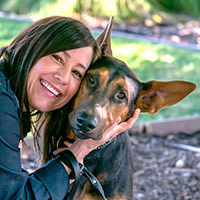
Dr. Shea Cox, DVM, CVPP, CHPV
Dr. Shea Cox is the founder of BluePearl Pet Hospice and is a global leader in animal hospice and palliative care. With a focus on technology, innovation and education, her efforts are changing the end-of-life landscape in veterinary medicine.
Related articles
![French bulldog puppy looking scared at vet]() opens in a new tab
opens in a new tab10 Things to Ask at Your First Vet Visit
There are no stupid questions — well, when it comes to your dog’s health.
![Cute weimaraner dog lying on lawn and scratching its back]() opens in a new tab
opens in a new tab5 of the Best Ways to Solve Your Dog’s Allergies
Here’s what works (and what doesn’t).
![Dog sitting next to owner]() opens in a new tab
opens in a new tabDIY Pet Physical Exam: How to Check Your Dog’s Breathing & Skin
Veterinarian Dr. Shea Cox on how to get comfortable checking your dog’s breathing, respiratory rate, and skin hydration.
![A dog sitting on the floor with a bowl of kibble.]() opens in a new tab
opens in a new tabEverything You Need to Know About Your Dog’s Gut Microbiome
Microscopic organisms may reveal pathways to better health for your pet.
